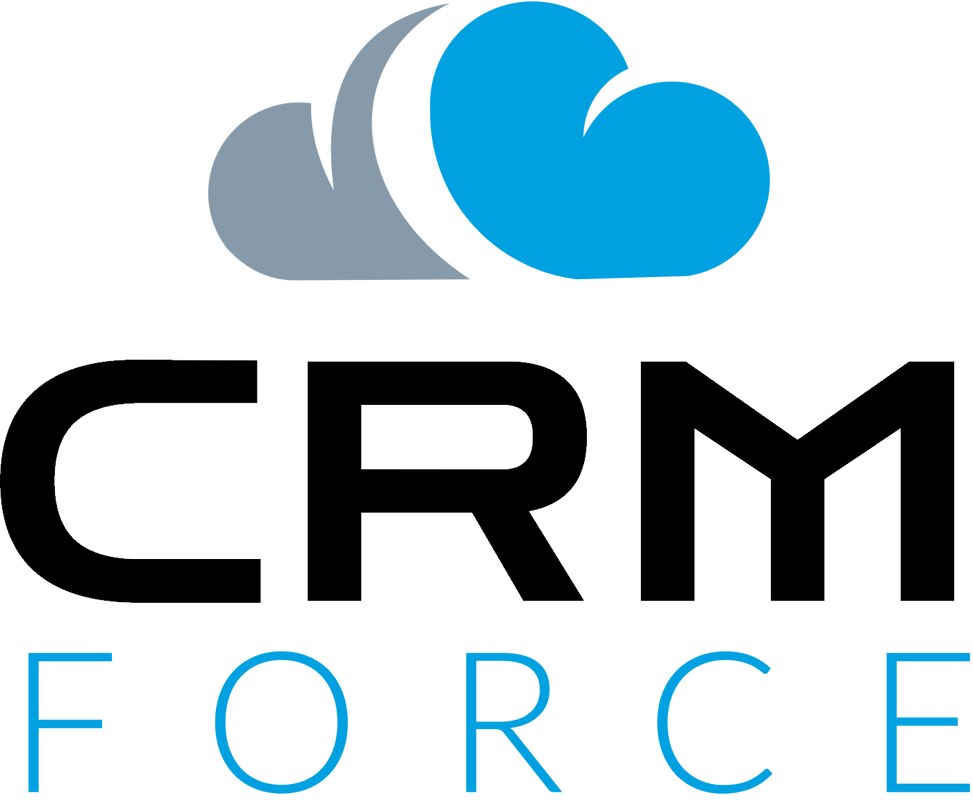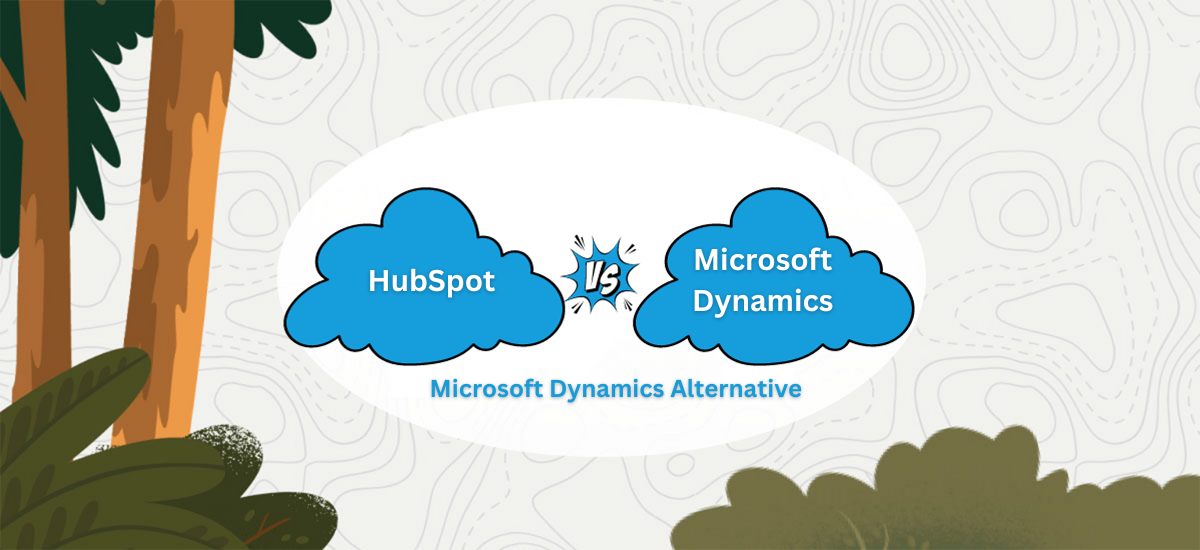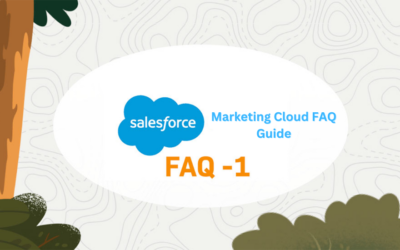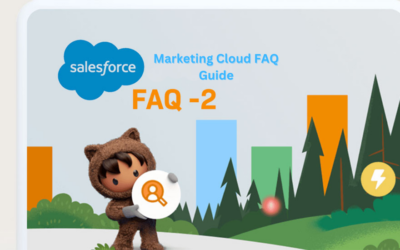In the ever-evolving landscape of modern business, the management of customer relationships has become a paramount factor in achieving success and sustaining growth. The utilization of Customer Relationship Management (CRM) software is no longer an option but a necessity. At the forefront of the CRM arena stand two titans: HubSpot and Microsoft Dynamics. In this comprehensive comparison, we embark on a journey through the intricate world of CRM solutions, meticulously dissecting the core features, advantages, disadvantages, and overall suitability of these industry leaders. Our aim is to equip you with the insights you need to make an informed choice for your business’s CRM needs. In the following chapters, we will explore not only the intricacies of HubSpot and Microsoft Dynamics but also their alternatives, ensuring that you are empowered to choose the CRM system that aligns perfectly with your unique business aspirations. Welcome to the world of CRM solutions, where your quest for the ideal customer relationship management tool begins.
The significance of CRM software cannot be overstated and sets the stage by unraveling the profound importance of CRM systems in the contemporary business milieu. We delve into the core pillars of CRM, elucidating how it orchestrates lead management, sales automation, the invaluable insights it provides into customer behavior, and the crucial realm of data security. As we venture further into this comprehensive comparison, we invite you to explore the depths of HubSpot and Microsoft Dynamics, each with its own distinctive strengths and attributes. Whether your quest for the perfect CRM is fueled by a pursuit of inbound marketing prowess, seamless Microsoft integration, or a curiosity about alternative solutions, this guide is your compass in the intricate realm of CRM software. If you need assistance with Salesforce CRM setup and optimization, companies like CRM Force can provide valuable expertise and support.
1- The Significance of CRM Software
In this chapter, we set the stage by highlighting the critical role that CRM software plays in the contemporary business environment. We go into extensive detail, covering various aspects, including:
Lead Management: We explore how CRM software aids businesses in capturing and managing leads, employing lead-scoring techniques, and effectively nurturing leads until they are ready for conversion. We emphasize the importance of having a streamlined process for lead management in the competitive market.
Sales Automation: This section dives into the significance of sales automation. We detail how CRM systems automate repetitive sales tasks, provide real-time insights into sales activities, and enhance sales team productivity. We discuss the potential for increased revenue and efficiency that comes with sales automation.
Customer Insights: Customer data is invaluable, and CRM software is a treasure trove of insights. We examine how CRM systems collect and analyze data to provide a deep understanding of customer behavior and preferences. This insight empowers businesses to tailor their interactions and marketing strategies, ultimately leading to higher customer satisfaction and retention.
Data Security: The chapter also delves into the critical aspect of data security. We discuss the importance of safeguarding customer data and ensuring compliance with data protection regulations. We highlight the role of CRM software in providing robust security measures to protect sensitive information.
2- An In-Depth Look at HubSpot
This chapter is dedicated to providing a comprehensive overview of HubSpot, focusing on its core functionalities and features. We meticulously explore key aspects:
Lead Generation and Management: We detail how HubSpot excels in lead generation through content marketing, landing pages, and contact forms. We discuss lead scoring to identify the most promising leads and how HubSpot facilitates intelligent lead management.
Marketing Automation: This section offers an in-depth examination of HubSpot’s marketing automation capabilities. It covers email marketing, content management, social media integration, and campaign optimization, highlighting how these features benefit businesses.
Sales Automation: We discuss how HubSpot streamlines the sales process, from lead nurturing to closing deals. The focus is on automating repetitive tasks, improving communication, and delivering personalized experiences to prospects and customers.
Customer Support and Ticketing: This part explores HubSpot’s customer support tools and ticketing system, emphasizing how they assist businesses in providing efficient customer service and managing support requests.
Analytics and Reporting: We analyze the analytics and reporting features of HubSpot, explaining how they allow businesses to measure the effectiveness of their marketing and sales efforts, identify areas for improvement, and make data-driven decisions.
3- Unpacking Microsoft Dynamics
This chapter offers an in-depth exploration of Microsoft Dynamics, showcasing its strengths and key features:
Sales and Opportunity Management: We detail how Microsoft Dynamics supports sales teams by managing opportunities, forecasting, and pipeline management. The focus is on how it aids in tracking and closing deals.
Marketing Automation: This section explores Microsoft Dynamics’ marketing automation features, including campaign management, customer segmentation, and personalized marketing initiatives. We highlight how it enables businesses to engage customers effectively.
Customer Service and Support: We delve into Microsoft Dynamics’ capabilities in customer service, emphasizing its role in managing service cases, tracking customer inquiries, and ensuring prompt support delivery.
Integration with Microsoft 365: This section highlights the seamless integration between Microsoft Dynamics and Microsoft 365, elucidating how it enhances collaboration, communication, and overall productivity within organizations.
Advanced Analytics and AI Capabilities: We discuss how Microsoft Dynamics leverages artificial intelligence and advanced analytics to provide businesses with data-driven insights, predictive analytics, and intelligent recommendations.
Additionally, we explore the pricing structure of Microsoft Dynamics, explaining the various pricing models and editions available to accommodate businesses of different sizes.
4- Feature Comparison – HubSpot vs Microsoft Dynamics
In this chapter, we conduct a comprehensive feature-by-feature comparison between HubSpot and Microsoft Dynamics. We scrutinize the following aspects in depth:
User-Friendliness: We explore the user interface of both CRM systems, discussing their ease of navigation, intuitiveness, and overall user experience. This analysis will help readers understand which CRM might be more comfortable for their teams to adopt.
Customization Options: We dissect the level of customization each CRM offers. This includes the ability to adapt the CRM to specific business processes, modify workflows, and tailor the system to meet unique needs. Readers will gain insights into which CRM is better suited for their specific business requirements.
Integrations: This section evaluates the integrations available with each CRM. We highlight the variety and compatibility of third-party integrations, as well as how seamlessly they can connect with other software or tools within your business environment.
Automation Capabilities: Automation is a cornerstone of modern CRM systems. We analyze how HubSpot and Microsoft Dynamics handle workflow automation, lead nurturing, and email marketing automation. We also explore the use of artificial intelligence in these areas, providing a detailed comparison of their automation features.
Mobile Accessibility: Given the importance of mobile productivity, we dive deep into the mobile accessibility of both CRM systems. This analysis covers the mobile apps’ features, their usability, and their compatibility with various devices and platforms.
5- User Experience and Interface
This chapter provides an in-depth analysis of the user experience (UX) and interface design of both HubSpot and Microsoft Dynamics. We explore:
Layout and Navigation: We delve into the layout of each CRM, the organization of menus and features, and the overall aesthetics. Readers will gain insights into the design and how it influences user experience.
User-Friendliness: We assess how user-friendly each CRM’s interface is, taking into account factors such as intuitiveness, simplicity, and how well it aligns with typical user expectations. This analysis helps readers understand how easy it is for their teams to adapt to the CRM.
Customization of User Interface: We explore the extent to which users can customize the CRM’s interface to suit their preferences. This includes personalization options, such as custom dashboards and layouts.
User Satisfaction: We may reference user reviews and feedback to gauge user satisfaction with the interfaces. This provides real-world insights into how users feel about using the CRM on a day-to-day basis.
6- Customization and Integration Capabilities
This chapter focuses on the customization and integration capabilities of both CRM systems. We delve into the following aspects:
Customization Options: We explore the extent to which each CRM can be customized to align with specific business processes. This includes the ability to modify workflows, add custom fields, and tailor the system to unique requirements.
Third-Party Integrations: We detail the range of third-party integrations available for each CRM, highlighting how they can seamlessly connect with other tools and systems used within your organization. This analysis aids in understanding how well the CRM can integrate into your existing tech stack.
Workflow Tailoring: We discuss the ease with which you can adapt the CRM to your unique business processes. This includes creating custom automation rules, defining lead scoring criteria, and configuring the CRM to match your specific workflow.
7- Automation and Workflow Efficiency
Automation is a vital aspect of modern CRM software, and this chapter provides an in-depth exploration of how both HubSpot and Microsoft Dynamics handle it:
Workflow Automation: We delve into the capabilities of both CRM systems in automating repetitive tasks and streamlining processes. This includes lead nurturing, task assignments, and follow-up automation, among others.
Lead Nurturing: This section focuses on how each CRM facilitates lead nurturing, including personalized email sequences, automated follow-ups, and tracking of lead engagement. We assess the effectiveness of these features.
Email Marketing Automation: We analyze the email marketing automation capabilities of both CRMs, including features such as drip campaigns, email scheduling, and A/B testing. This provides insights into how well the CRMs support email marketing efforts.
Artificial Intelligence (AI): We explore the use of artificial intelligence in both HubSpot and Microsoft Dynamics, highlighting any AI-driven features, such as predictive analytics, chatbots, and lead scoring. This analysis gives readers an understanding of the advanced automation capabilities of these CRMs.
8- Mobile Accessibility and Mobile Apps
As mobile productivity becomes increasingly important, this chapter evaluates the mobile accessibility of HubSpot and Microsoft Dynamics:
Mobile App Features: We provide an in-depth examination of the features offered by the mobile apps of both CRMs. This includes functionality like access to contacts, calendar management, task management, and real-time notifications.
Usability on Different Platforms: We assess the usability of mobile apps on various platforms, including iOS and Android. This is crucial for businesses with diverse device preferences among their team members.
Compatibility with Other Tools: We discuss the ability of mobile apps to work seamlessly with other tools and software, ensuring that remote workers can remain productive while on the go.
9- Pricing and Scalability
This chapter delves into the pricing and scalability aspects of both HubSpot and Microsoft Dynamics:
Pricing Plans: We break down the various pricing plans offered by each CRM, outlining the features and limitations of each plan. This helps readers understand which plan aligns with their budget and needs.
Subscription Costs: We provide details on subscription costs, including monthly and annual pricing, to help businesses assess the financial impact of adopting these CRMs.
Scalability Options: We discuss the scalability options, such as the ability to add more users, access additional features, and accommodate business growth.
10- Support and Training
Customer support and training are critical for a smooth CRM implementation. This chapter evaluates the support options, documentation, and training resources provided by HubSpot and Microsoft Dynamics, ensuring that readers can make informed decisions regarding ongoing assistance and learning.
Customer Support Channels: We detail the various support channels offered, such as phone support, email support, and live chat. This provides insight into the accessibility of support when issues arise.
Documentation and Knowledge Base: We assess the availability and quality of documentation and knowledge base resources, including user manuals, tutorials, and FAQs, to assist users in troubleshooting and learning.
Training Resources: We explore the availability of training resources, such as webinars, online courses, and certifications, to aid users in mastering the CRM.
11- Data Security and Compliance
Data security and compliance are paramount in today’s business environment. This chapter delves into how HubSpot and Microsoft Dynamics handle sensitive customer data, ensuring security and compliance with data protection regulations.
Data Encryption: We explore the encryption methods to protect customer data during transmission and storage.
Access Control: We discuss access control mechanisms, ensuring that only authorized users have access to sensitive data.
Compliance Features: We highlight any specific features or tools within each CRM that support regulatory compliance, such as GDPR or HIPAA compliance features.
12- Case Studies and User Experiences
This chapter serves as a valuable resource for readers by offering real-world insights into the practical application and impact of both HubSpot and Microsoft Dynamics. It delves into the experiences of businesses across various industries and sizes that have utilized these CRM systems to achieve success. Here’s a breakdown of what this chapter entails:
Real-World Case Studies: This section presents detailed case studies of companies that have implemented either HubSpot or Microsoft Dynamics. Each case study highlights the specific challenges faced by the company, the CRM’s role in addressing those challenges, and the outcomes achieved. This information provides a concrete understanding of how these CRMs can drive positive changes in different business contexts.
Industry Diversity: The case studies cover a range of industries, ensuring that readers can find examples that closely align with their own business sector. Whether it’s e-commerce, healthcare, manufacturing, or professional services, these case studies showcase the adaptability and effectiveness of CRM systems.
Business Size: The case studies span businesses of different sizes, from startups to established enterprises. This allows readers to see how CRMs cater to the needs and objectives of businesses with varying levels of complexity and resources.
Success Metrics: The case studies include specific success metrics, such as increased lead conversion rates, improved customer retention, or higher revenue growth. These metrics provide tangible evidence of the CRM’s impact on the bottom line.
Challenges Addressed: The case studies also outline the challenges that the businesses faced before adopting the CRM. Whether it’s a struggle with lead management, disorganized customer data, or inefficient marketing processes, readers can identify these challenges and see how CRM solutions tackle them.
User Testimonials: Alongside the case studies, user testimonials or quotes are included to provide direct feedback from individuals who have used the CRM systems. These testimonials offer firsthand accounts of the user experience, satisfaction levels, and specific benefits achieved by using the CRM.
Best Practices and Lessons Learned: The case studies often highlight best practices and lessons learned during the CRM implementation and usage. This provides valuable insights for readers who may be considering adopting a CRM system, helping them avoid common pitfalls and make the most of their investment.
Images and Visual Aids: Visual aids, such as screenshots, charts, or graphs, may be included to illustrate key points within the case studies. These visual aids make the content more engaging and enhance the understanding of the CRM’s impact.
Conclusion
As our journey through the realms of HubSpot and Microsoft Dynamics draws to a close, it is evident that the realm of CRM software is rich with innovation, potential, and choices. We have meticulously examined every facet of these two industry giants, unraveling their unique offerings, customization capabilities, user experiences, and pricing models. The goal was to empower you, the reader, with a deep understanding of which CRM solution aligns most harmoniously with your business’s distinctive needs and objectives. But the world of CRM is not limited to just two options; it is teeming with alternatives, each with its own set of features, benefits, and the potential to propel your business to new heights. It is essential to acknowledge that while both HubSpot and Microsoft Dynamics are formidable options, they might not be the perfect fit for every organization. This is where the concept of “Microsoft Dynamics Alternative” comes into play.
We expand our horizons beyond the realm of HubSpot and Microsoft Dynamics to explore alternative CRM solutions. These alternatives offer fresh perspectives, capabilities, and approaches to CRM, catering to businesses with diverse needs and preferences. By understanding the realm of alternatives, you ensure that your choice is not just an informed one but the one that best resonates with your unique business vision. The pursuit of the ideal CRM is not confined to a binary decision. It is a journey marked by exploration, discovery, and the quest for excellence in managing customer relationships. So, whether you are seeking a change from the status quo or simply investigating the potential of an alternative, the world of CRM solutions holds a myriad of possibilities. This concluding chapter invites you to broaden your horizons, seize new opportunities, and discover the perfect “Microsoft Dynamics Alternative” that aligns seamlessly with your business’s ambitions. To learn more about how CRM Force can assist you in recruiting top CRM talent and optimizing your CRM strategies for successful drip campaigns, contact us today. Together, let’s maximize your customer engagement Contact Us today.





